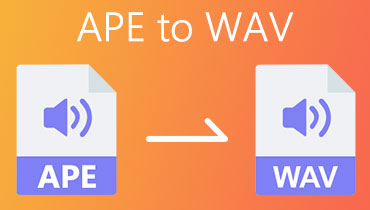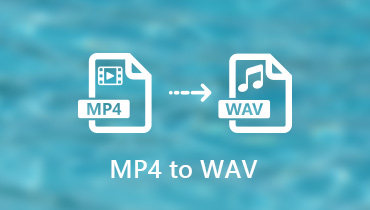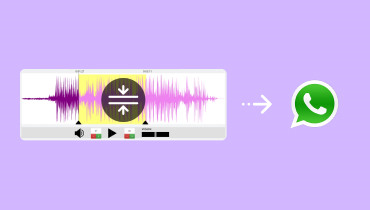What is APE Format & How to Do APE Compression in Three Best Ways
Do you want to safeguard the original audio files that you have extracted from CDs or tapes? If that’s the case, it's essential to utilize the APE format as the file extension to preserve these initial digital copies. One thing that you must know about APE is that it maintains a high audio standard since it utilizes one of the most resource-intensive compressions for the CPU. Despite that, only a limited number of computer systems and media players can effectively handle the encoding employed by APE. Therefore, if you want to play APE files on your desktop or other media players without a high-capacity CPU, you can do so safely unless you do APE compression first. Fortunately, if you are interested in learning how to compress your APE files to ensure compatibility with your desktop, then continue reading this blog post. By reading below, you will learn the best tools and their techniques to achieve ultimate audio compression like a pro.

PAGE CONTENT
Part 1. What is APE Format
To begin with, let us have a precise definition of APE. The APE file format refers to a lossless audio format known as Monkey's Audio, denoted by the .ape file extension. This format is alternatively recognized as an APE codec, also known as a MAC format. The distinctive .ape file extension is instrumental in identifying and categorizing this type of audio file. In contrast to other lossy audio formats such as MP3, AAC, and WMA, the APE format emerges for its ability to preserve audio data without any loss in quality. Remarkably, the APE format ensures that when digital audio files are played, they faithfully reproduce the original sound source.
Furthermore, this fidelity in audio reproduction distinguishes the APE format from its lossy counterparts. This makes it a preferred choice for those who seek high-quality audio preservation. Therefore, APE files are characterized by their capacity to maintain the integrity of the sound signal. And it provides an accurate and authentic representation of the initial audio recording.
Part 2. How to Compress APE Format in Three Efficient Ways
1. Vidmore Video Converter
First in line is this Vidmore Video Converter. Even though its name suggests that it is a dedicated video converter, it has powerful editing tools that include an audio compressor. In fact, its exceptional audio compression tool stands out in the market by offering unparalleled APE compression capabilities that surpass those of other available compressors. Not only does it efficiently reduce the size of your beloved APE files, but it also preserves their original quality. Additionally, it also allows simultaneous conversion to another audio format during compression. What sets this tool apart is its user-friendly interface, making it accessible to everyone. In just under a minute, you can effortlessly master all the functions and features it has to offer aside from compression.
Moreover, this software goes beyond mere compression by providing you with the flexibility to adjust various settings on their APE files. Users can further minimize file sizes by modifying parameters such as bitrate, sample rate, channels, and more. This makes it the optimal choice for compressing your Monkey's audio files into significantly smaller sizes.
Step 1. Fire up the software after acquiring it on your computer. Then, go to the Toolbox tab menu to see the Audio Compressor tool that you need.
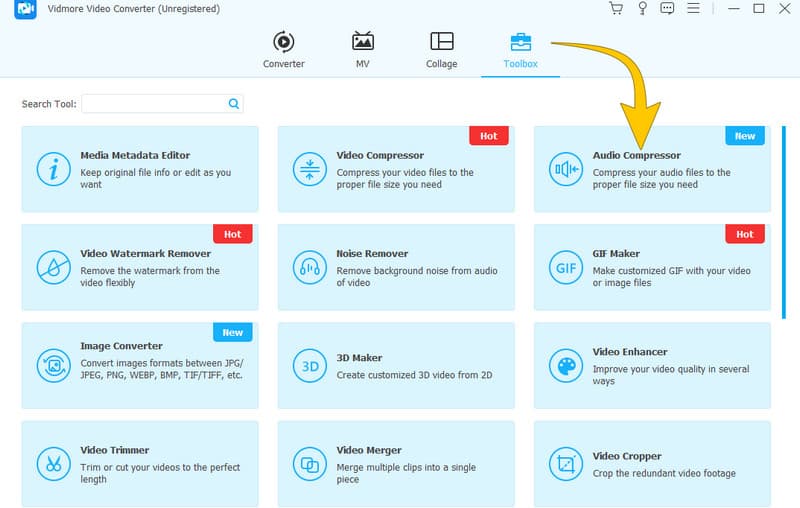
Step 2. Next, click the Plus button to upload the APE file you want to compress.
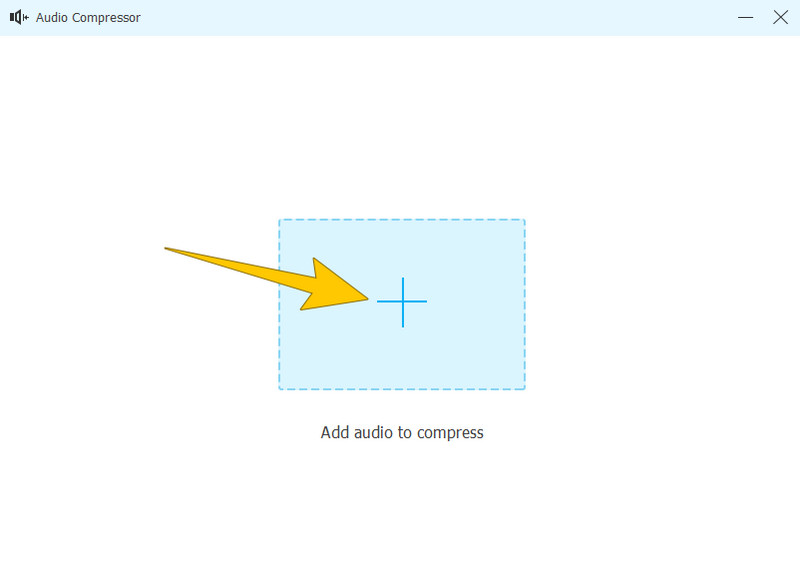
Step 3. Once the file is loaded, modify all the presets you need, especially the Size. Once done, click the compress button to apply and save the compression.
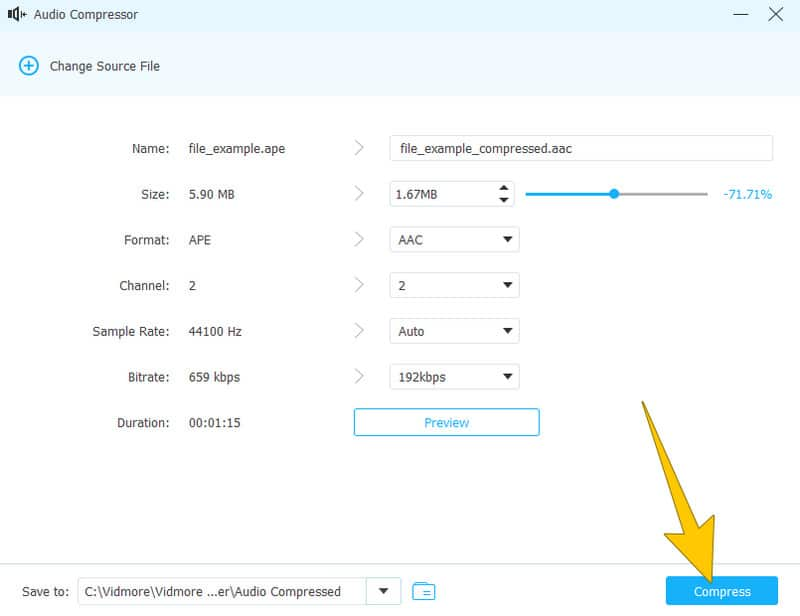
Pros
- It offers a wide variety of features and editing options.
- You can acquire it for free.
- It supports more than 200 various video and audio formats.
- It uses advanced technology for audio compression.
Cons
- You cannot use it for APE compression on Linux.
- You will need to purchase the services to access its expanded features.
2. Monkey’s Audio
Next is the Monkey's Audio, which stands out as a compact yet robust lossless audio compression tool. It effectively compresses and decompresses audio files while maintaining their original quality. Furthermore, it distinguishes itself from other APE audio file converters by being a Windows-exclusive application that imposes restrictions on the conversion of files to the APE format, limiting the number of files that can be processed. When using Monkey's Audio to convert audio files, it's crucial to adhere to a specific set of steps. Hence, by following these instructions, you can seamlessly navigate through the conversion process, harnessing the capabilities of this Windows-centric application.
Step 1. Open the compressor and click the Mode tab menu. Then, choose the Compress mode.
Step 2. After that, click the Add Files button to upload your APE file. Then, choose your desired compression level.
Step 3. You can also choose an output format by clicking Options > Output. Then, hit the Compress button.
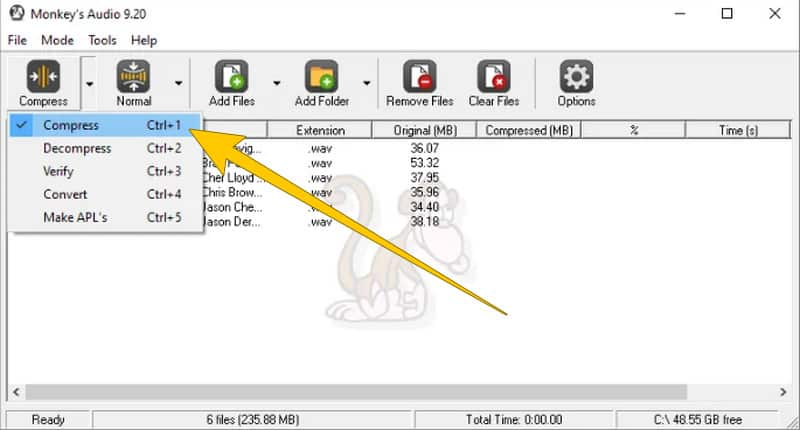
Pros
- It offers a lossless compression.
- It comes with Windows integrations.
- The compression speed is compelling.
Cons
- It only supports Windows.
- It has limited support for audio formats.
3. Audacity
Another good software for compression at your disposal is Audacity. It is a widely used and free digital audio editor that provides comprehensive functionality for recording, editing, and converting audio files. Yes, its conversion feature will help you compress your APE files. However, for those who are unfamiliar with Audacity, the process of converting APE files may appear challenging, primarily because Audacity lacks native support for APE files. Consequently, to accomplish this task, you'll need to enlist the assistance of a third-party tool, specifically FFmpeg for Audacity. Thus, let's have the simple steps below using Audacity to compress audio in conjunction with FFmpeg.
Step 1. Download Audacity and FFmpeg plug-in on your computer. This plug-in will help you import the APE file in Audacity.
Step 2. Launch the Audacity and click File > Import > Audio. Once uploaded, start the conversion by clicking the File > Export > Export Multiple.
Step 3. Choose a format that you want to use, then hit the Export button.
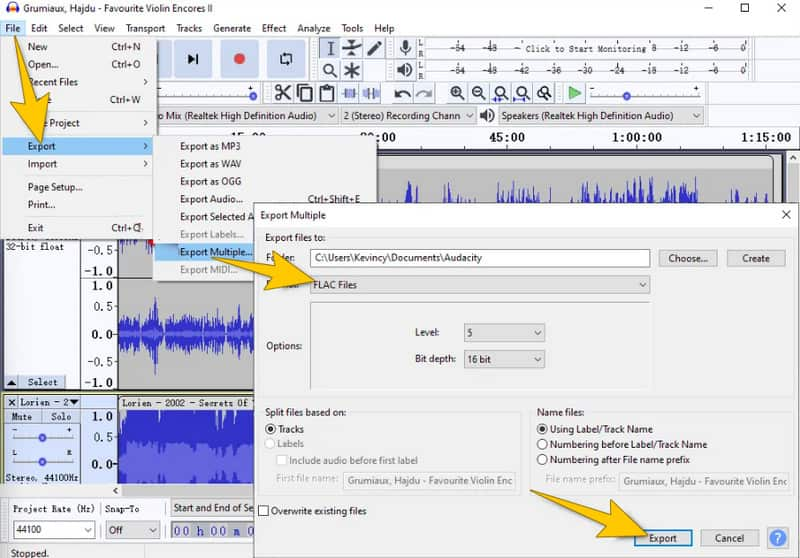
Pros
- It has the versatility to provide various editing tools.
- It is an open-source tool.
- You can use it for free forever.
Cons
- It needs the help of a third-party tool to convert APE files.
- It is challenging to use.
Part 3. FAQs about APE Format
Which audio format is smaller, MP3 or APE?
Universally, MP3 is smaller than nearly all audio formats.
Is APE a lossless format?
Yes, APE is known to be a lossless audio format.
APE VS. FLAC, which is better?
Both APE and FLAC are lossless formats. There needs to be a clear consensus on which is definitively better. Hence, the choice between APE and FLAC often depends on factors such as compatibility, support, and personal preferences.
Conclusion
There you have it, the three notable tools that offer APE compression. Feel free to select the one that suits your requirements and get started on your compression tasks. As for us, the Vidmore Video Converter is our most recommended tool if you want a multifunctional and robust audio editing solution.
